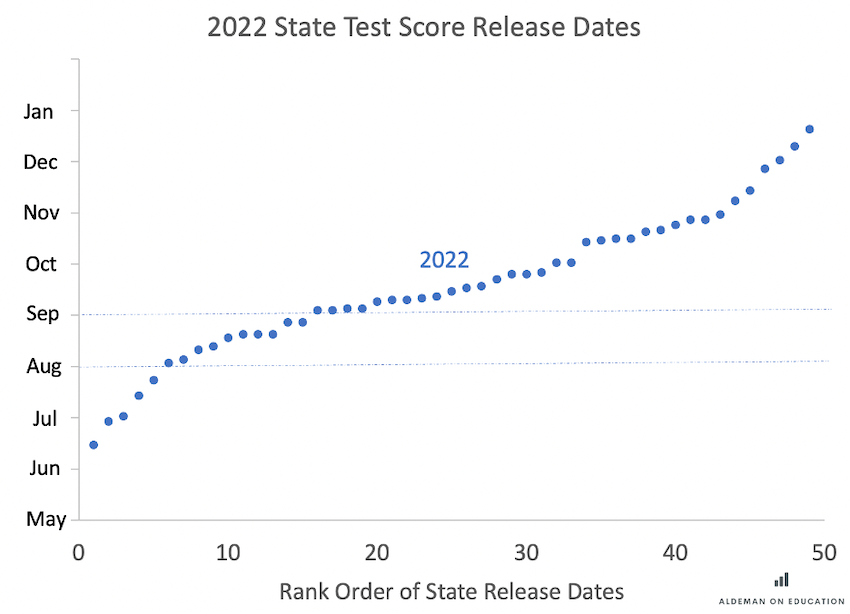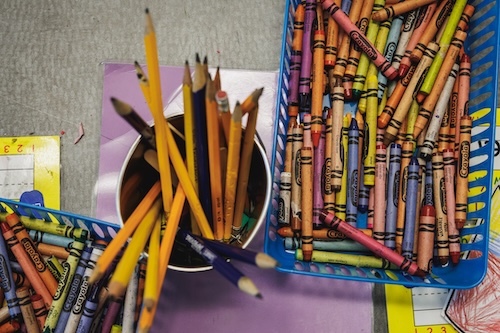

Over the next two months, at least 25 million elementary, middle, and high school students nationwide will sit down for state exams in reading, math, and science. Most caregivers will want to know how their child did. Are they performing on grade level? Did they make a year’s worth of growth since last year?
If the results come fast enough, caregivers could invest in extra learning supports this summer, or even consider a different school for their child for the fall. Teachers could use the summer to review their students’ performance and adjust their lesson plans for next year. Principals could use the results to assign students in need of extra support to their best teachers next year.
All of these actions depend on getting test results back quickly. But if history is any guide, we probably won’t have the results of spring 2023 testing for months.
Like it did in creating the state testing mandate, Congress needs to step in and require states to send preliminary score reports back to families and teachers very quickly. Such a shift would be good policy at any point, but it’s especially urgent right now. Due to COVID-19 and the long periods of remote learning it necessitated, today’s students are far below where they otherwise would be. Students who were in need of extra help before the pandemic fell even further behind.
Many school district leaders are working to develop interventions to help address these gaps, but students aren’t signing up for the summer-school, after-school, or tutoring programs that are being offered. Caregivers could be receptive audiences and engaged as partners to help boost participation rates, but only if they’re given time and space to do so.
The problem: State test results are too slow
Most state tests are administered in April or May. The graph below shows when states released the results of their 2022 tests to the public. Each dot represents one state and the date they released their results. As a reference point, the chart also includes dotted horizontal lines for August 1 and September 1. Although school start dates vary across and within states, these lines are intended as rough proxies for when the following school year starts.
As the graph shows, in 2022, only five states released their results in June or July, in advance of the new school year. Another 10 released results in August, just before or right around the start of the new year. But that means 35 states and the District of Columbia all released their results in September or later.

Source: 2022 data comes from the author’s scan of state department of education websites.
The chart above shows which states released their official results to the public, and a handful of states share preliminary data with parents and educators in advance of the official public release. However, that’s far from standard practice.
Why aren’t states releasing their results faster? It’s likely not a technical problem. States have been administering annual tests for two decades, and the tests themselves are now routinely taken on computers.
This suggests the delays are mostly a function of political processes. NWEA provides results on MAP® Growth™ interim assessments to schools within 24 hours after a student completes a test. Students who take the ACT, SAT, GRE, and AP tests can all expect their results online within about two weeks. These are for the easy-to-score multiple choice components of the tests, but the makers of the ACT and SAT tests warn that results may take another few days or up to two weeks to score written test items. In contrast to the state tests, which typically have no stakes attached to them for individual students, these latter examples are all vetted results that have high stakes for students.
What’s different is that these tests are sold on the private market and must be responsive to end users. In contrast, states have configured their testing systems more as a compliance exercise in response to the federal testing mandate, at the expense of timely and actionable information to parents and educators.
The feds have not been helpful in this regard. Congress imposed a long list of data points that must be included and disaggregated on school report cards, but it is silent about how fast the results must be relayed to parents, teachers, or the public.
The U.S. Department of Education has layered on its own technical specifications for state tests. Its most recent assessment peer review process focused much more on technical concerns around the test itself than it did on timeliness and usability of the results. For example, it included a single question on reporting and asked for states to provide evidence of a “timeline that shows results are reported to districts, schools, and teachers in time to allow for the use of the results in planning for the following school year.” However, the same process evaluated state tests on 29 other “critical elements” related to the test itself and the processes by which the tests are administered and monitored. Taken as a whole, the peer-review process nudges states to adopt more technically complex tests at the expense of simplicity and speed.
In short, we need a new thumb on the scale to make the state tests timely and actionable for the intended users.
The solution: Require states to release results to caregivers and educators within two weeks
Congress should amend the testing rule to require states to send preliminary results to caregivers and educators within two weeks of a test’s administration. States could take more time to produce vetted results for public accountability purposes, but the preliminary results would provide immediate, actionable information to the people in the best positions to act. Some states already choose to send score reports back to caregivers and educators earlier than the public release, but a quick return of results should be the standard operating practice across the country, and that will only happen with congressional action.
There’s a case to be made that even the vetted school- and district-level results should be released much faster than they are today. School and district leaders could also make much better use of their summer time if they had faster results.
But if nothing else, states should get preliminary results back to caregivers and educators quickly because they can take immediate actions. If caregivers knew their child’s results by the end of May, they might be able to make different decisions for their child for the summer, such as finding a tutor or signing up for summer school. They would also have time to consider alternative schooling options for their child for the following school year.
Processing the results quickly would also provide teachers and school leaders the time to actually look at and reflect on their students’ performance. Given enough lead time, a teacher might be able to change their instructional practices for the following year. A principal might be able to respond to schoolwide challenges, such as problems with early reading skills, or they might consider a student’s test score when making classroom assignments for the following year. District leaders might adopt different curricula—and provide staff the time and training to adapt—or change school-level staffing levels.
Policymakers and advocates have touted all of these use cases for state tests before, but they’re impossible to do well with the current slow pace of the results. A key portion of the theory of action behind state tests depends on processing the results quickly. State administrators need to be nudged to focus on speed and getting test results back to caregivers and educators as quickly as possible.







